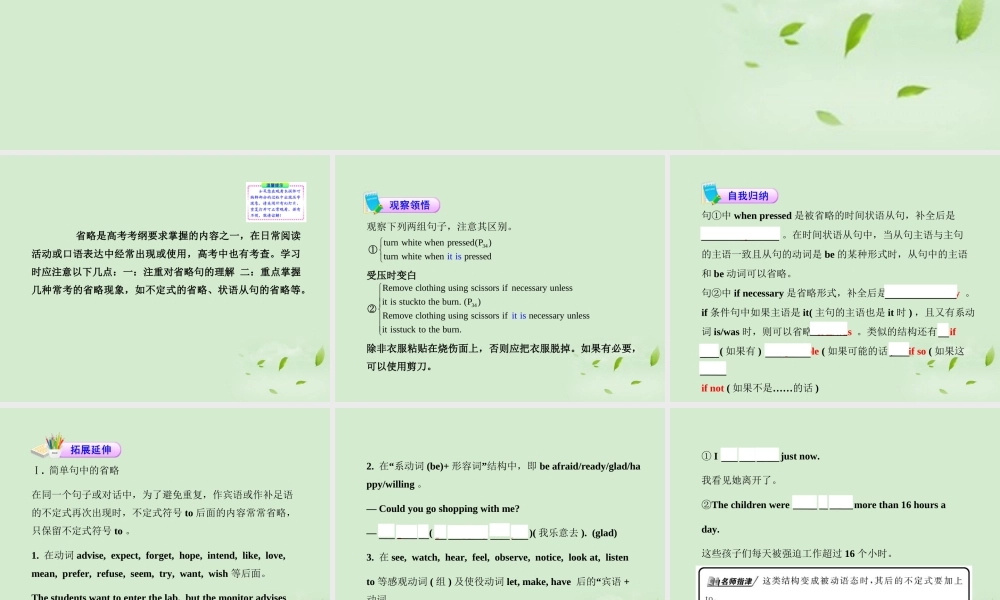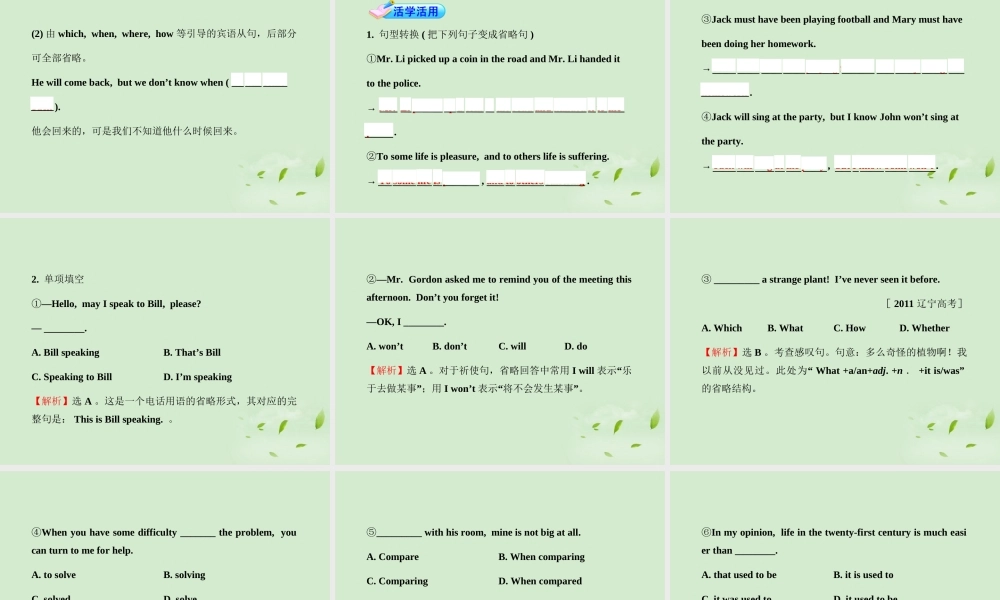省略是高考考纲要求掌握的内容之一,在日常阅读活动或口语表达中经常出现或使用,高考中也有考查。学习时应注意以下几点:一:注重对省略句的理解 二:重点掌握几种常考的省略现象,如不定式的省略、状语从句的省略等。 观察下列两组句子,注意其区别。受压时变白除非衣服粘贴在烧伤面上,否则应把衣服脱掉。如果有必要,可以使用剪刀。34turn white when pressed(P )tuitr n iswhite when pressed①34Remove clothing using scissors if necessary unless it is stuckto the burn. (P )Remove clothing using scissors if necessary unless it isstuck to the burn. it is② 句①中 when pressed 是被省略的时间状语从句,补全后是when it is pressed 。在时间状语从句中,当从句主语与主句的主语一致且从句的动词是 be 的某种形式时,从句中的主语和 be 动词可以省略。句②中 if necessary 是省略形式,补全后是 if it is necessary 。if 条件句中如果主语是 it( 主句的主语也是 it 时 ) ,且又有系动词 is/was 时,则可以省略 it is/was 。类似的结构还有: if any ( 如果有 ) , if possible ( 如果可能的话 ) , if so ( 如果这样 ) ,if not (……如果不是的话 ) Ⅰ. 简单句中的省略在同一个句子或对话中,为了避免重复,作宾语或作补足语的不定式再次出现时,不定式符号 to 后面的内容常常省略,只保留不定式符号 to 。1. 在动词 advise, expect, forget, hope, intend, like, love, mean, prefer, refuse, seem, try, want, wish 等后面。The students want to enter the lab, but the monitor advises them not to ( enter the lab ). 2. “在 系动词 (be)+”形容词 结构中,即 be afraid/ready/glad/happy/willing 。— Could you go shopping with me? — I’m glad to ( go shopping with you )( 我乐意去 ). (glad)3. 在 see, watch, hear, feel, observe, notice, look at, listen to 等感观动词 ( 组 ) 及使役动词 let, make, have “后的 宾语 +动词”不定式作宾语补足语 的结构中,不定式符号 to 必须省略。 ① I saw her leave just now. 我看见她离开了。②The children were made to work more ...




